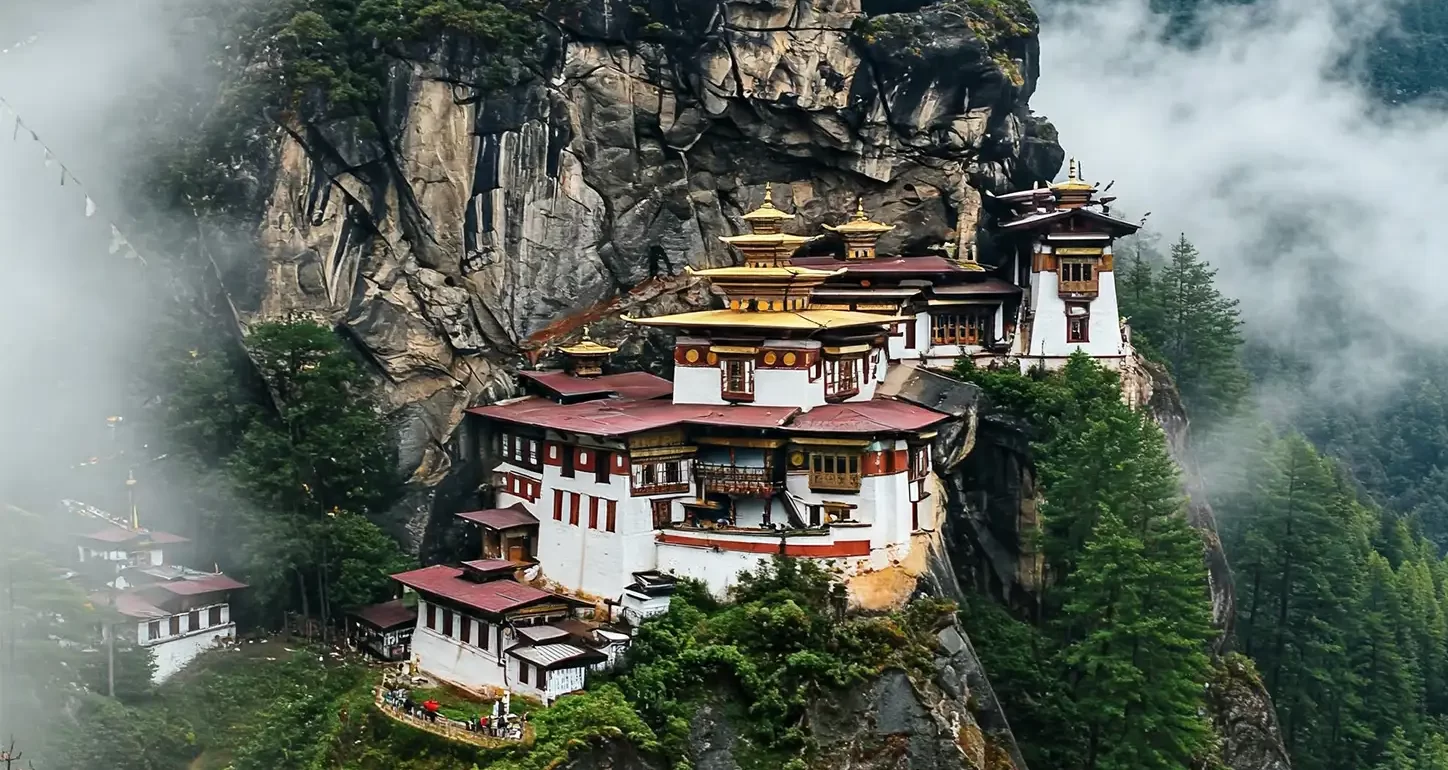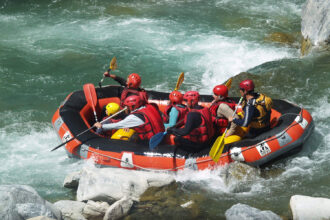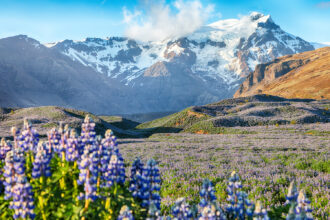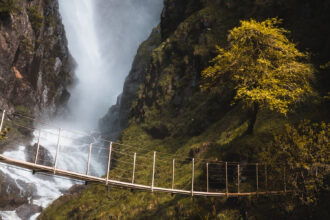Bhutan is one such country located in the heart of the eastern Himalayas, which catches the imagination of travelers from all around the world. Bhutan is often known as the “Land of the Thunder Dragon” because of frequent thunderstorms rolling through its valleys. The country is a small kingdom packed with immense beauty, rich cultural heritage, and deeply rooted sense of spirituality. It is very famous for the commitment to Gross National Happiness rather than economic growth, making it outstanding not only in terms of its natural wonders but also unique blends of modernity and tradition.
Geographical Importance of Bhutan
With the geographical location that Bhutan is blessed with, it is perhaps one of the most beautiful and diverse countries in Asia. Its borders are along India to its south and China to its north, where its border also abuts the mighty Himalayas. Bhutan is a landlocked country, and it happens to be between 1,000 and 7,500 meters above sea level, hence one finds diversified topography in the form of lush subtropical forests, temperate valleys, and snow-capped peaks.
The Bhutan landscape is entirely mountainous; it hosts several of the unclimbed highest peaks of the world. Mountains feature within the culture and religious lives of the Bhutanese because quite a number have been said to be sacred as well as the location of a number of prominent monasteries. Bhutan is the ideal destination for the adventure trekker and lovers of water-based activity due to different landscapes. River cuts in this valley beautify the country; there is even an opportunity for water-based activity.
Historical Significance of Bhutan
Bhutan’s history dates back to the 8th century when Guru Padmasambhava, a revered Tibetan Buddhist saint, is believed to have introduced Buddhism to the country. Over the centuries, Bhutan remained a relatively isolated nation, fiercely protecting its unique culture and spiritual traditions from foreign influence.
In the 17th century, Shabdrung Ngawang Namgyal united the country and established a theocratic system of governance, starting a trend in laying out the monarchy foundations of Bhutan. Formal institution of the monarchy as it is known today came about when Ugyen Wangchuck was crowned as the first king of Bhutan in 1907. The monarchy has been instrumental in the modernization of the country while holding a profound regard for its customary methods.
Bhutan, of course, has her diplomatic history with India and China. Bhutan remains one of the few countries in the world that has not really been touched by modern warfare. Yet this has been accompanied by pressure on the sovereignty of the country from two regional giants. Despite all this, Bhutan succeeded in maintaining culture, traditions, and independence partly because of their powerful monarchy, as well as the country’s policy of controlling engagement with the outside world.
Places to visit in Bhutan
Bhutan is the land of awe-inspiring natural beauty as well as culturally significant sites. There is something to suit every kind of tourist in this mystical land, whether it be stunning monasteries perched on cliff faces or lush verdant valleys and alpine meadows. These are some of the must-visit places in Bhutan:
1.Paro Taktsang – Tiger’s Nest Monastery
As probably Bhutan’s most iconic and revered site, Paro Taktsang, more commonly known as the Tiger’s Nest Monastery, is a ‘must see’ when travelling to Bhutan. Standing on a cliff of an incredible height of 3,120 meters, this Buddhist monastery is one of Bhutan’s most sacred pilgrimage sites. It’s quite strenuous to trek up there, but it is well worth the agony because of the breathtaking views available of the surrounding mountains and valleys.
2.Thimphu
Thimphu is the capital city of Bhutan and a place filled with energetic yet serene life. All the capitals around the world have noise and air pollution, whereas Thimphu has not only saved the peace and custom but also kept the quietness of the place. Among the notable attractions are Tashichho Dzong, a fort structure large enough to house government offices and religious places; and the 50-metre-tall giant Buddha Dordenma, which presents breathtaking views of the city. Another attraction is the vibrant markets where you can shop for local handicrafts and Bhutanese textiles.
3.Punakha Dzong
This is one of the most beautiful and historically important fortresses of Bhutan, known as the “Palace of Great Happiness.” It is situated on a confluence and riverside of Pho Chhu and Mo Chhu rivers. The site assumes the feature of typical Bhutanese traditional architecture. It is regarded as sacredly important for its religious relevance too since the Punakha festival takes place annually at the valley.
4.Phobjikha Valley
A glacial valley surrounded by forests and mountains, Phobjikha houses the endangered black-necked cranes that migrate there every winter. Hike and bird-watching are great opportunities here, and tourists can understand how much Bhutan has done to protect its wildlife.
5.Bumthang Valley
Bumthang Valley is sometimes referred to as the spiritual heart of Bhutan. It homes some of Bhutan’s very important monasteries and temples, besides housing Jakar Dzong and Kurjey Lhakhang. Unique beauty and rural Bhutan in its tradition lives in the valley.
Best time to visit Bhutan
The best time to visit Bhutan depends on the nature of experience you are looking for. Generally, Bhutan has four major seasons, including spring, summer, autumn, and winter.
- Spring (March to May): This might be one of the best periods to visit Bhutan. It is mild, pleasant, with valleys full of flowers. It is lush green and pleasant with temperatures.
- Autumn (September to November): Bhutan is a great destination for the fall season. The climate is cool and dry, thus perfect for trekking and other outdoor activities. In addition, clear skies guarantee clear views of the Himalayas.
- Summer (June to August): Summer is the monsoon season in Bhutan, with rainfall being frequent. While the landscapes are lush and beautiful, heavy rainfall can sometimes cause travel disruptions, so it’s best to avoid visiting during this time if you are planning outdoor activities.
- Winter (December to February): The winters in Bhutan are quite cold, particularly in the higher regions, but this season provides clear skies and a chance to enjoy winter sports in the Himalayas. The scenery is fantastic, with snow-capped peaks as a dramatic backdrop.
Food to Try in Bhutan
Bhutanese food is known for their strong flavors; they are commonly said to have chili peppers and cheese. There are some to try:
1.Ema Datshi: Ema Datshi is actually considered the country’s national dish. It’s a spicy cheese and chile pepper stew over red rice.
2.Phaksha Paa: a dish prepared traditionally with pork, radishes, and chili peppers. Phaksha Paa is a favorite of the Bhutanese.
3.Jasha Maru: spicy chicken curry prepared using tomatoes, onions, and garlic. Jasha Maru is often eaten accompanied by rice.
4.Red Rice: the staple is red rice, which usually is taken with a variety of stews, curries, and meat dishes.
Why Visit Bhutan?
One of the most spiritual journeys is undertaken by traveling to Bhutan, where the potential for landscapes, cultural inheritances, and spiritual value comes together. You’re seen trekking through the Himalayas, visiting ancient monasteries, or immersing yourself in vibrant festivals, but you get a glimpse of a lifestyle that is profoundly connected to nature and spirituality.
Bhutan is one of those countries in the world where, despite all this materialism around, there seems to be happiness and sustainability that is offered as a refreshing alternative to the chaos of modern life. It’s not just a journey through breathtaking landscapes but into a different way of thinking and living. For more travel inspiration, visit – OutdoorKeeda.







